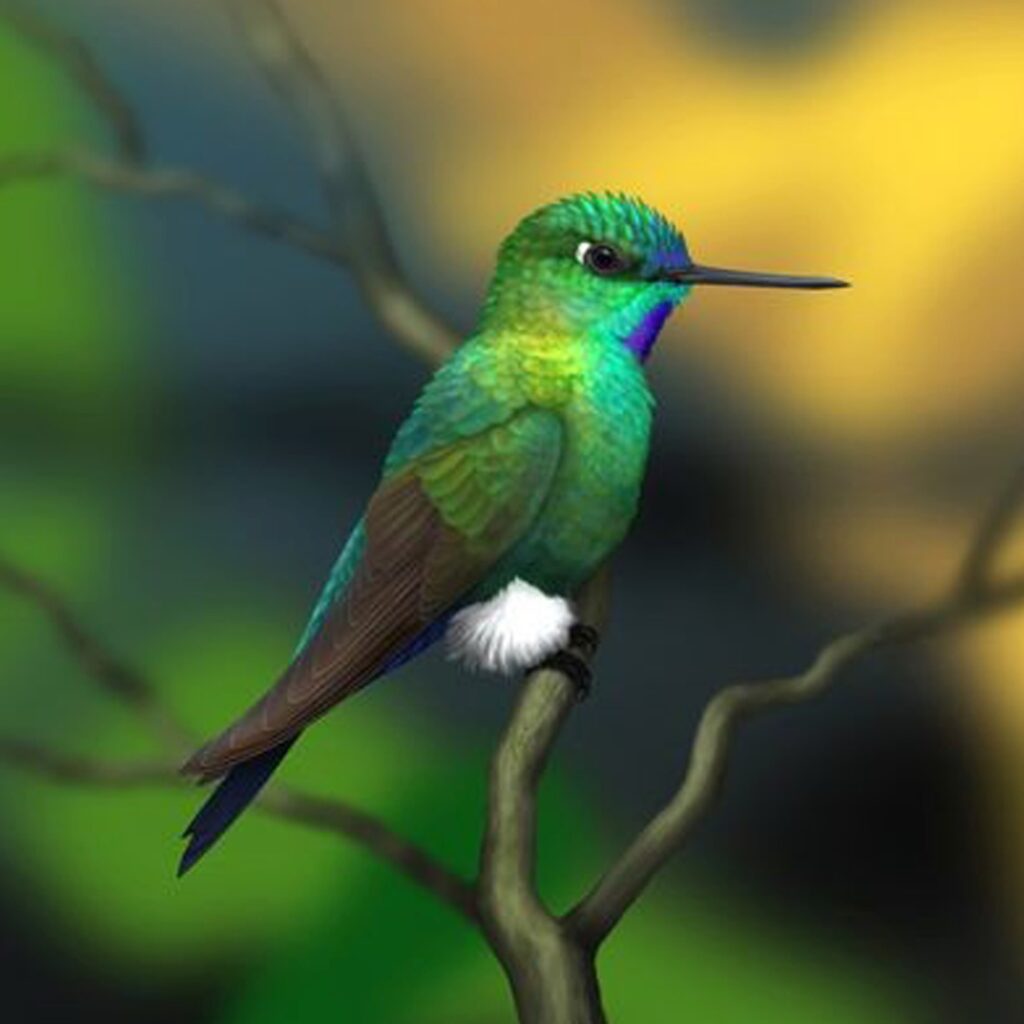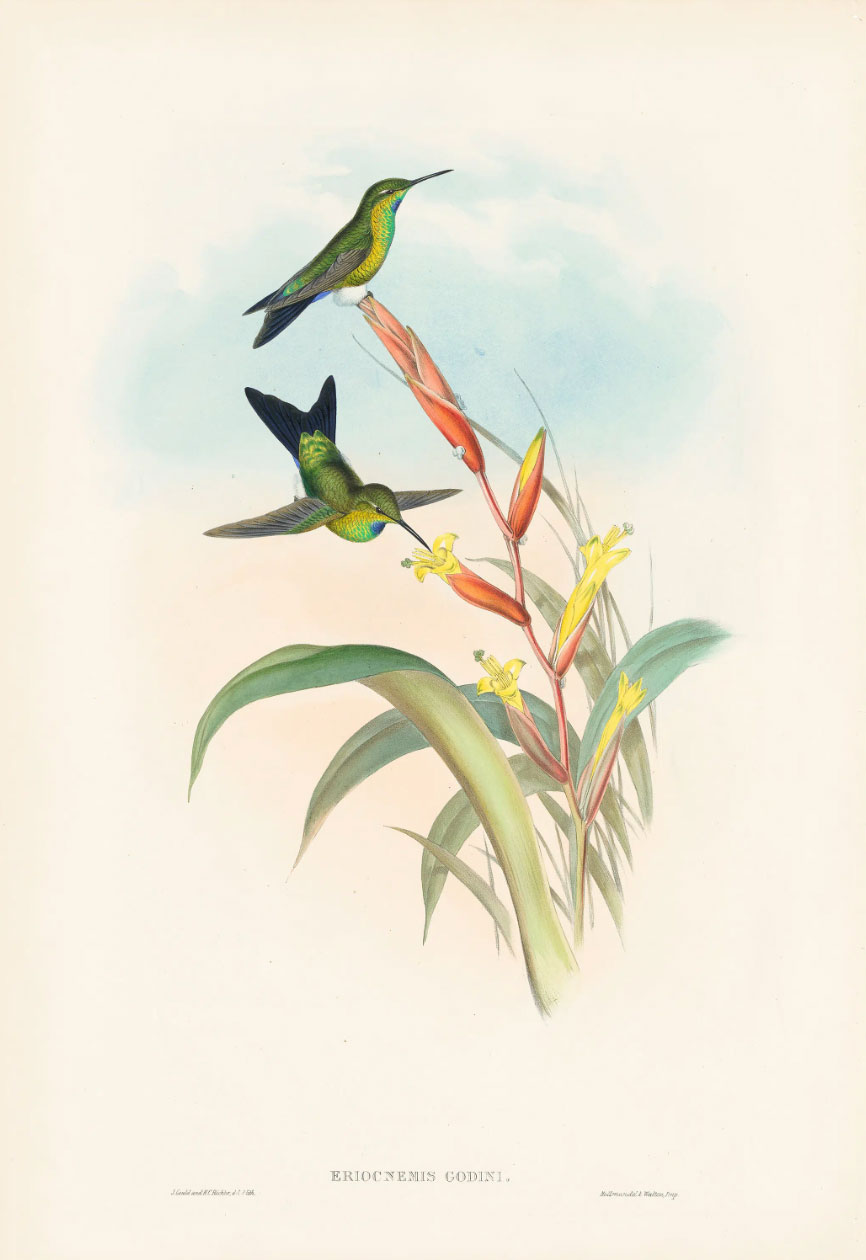The initial spotting of the bird dates back to the 19th century, in Pichincha.
Some species of Ecuadorian flora and fauna have not been sighted for decades. This includes ‘Eriocnemis godini,’ the turquoise-throated parrot, a native hummingbird species of the Ecuadorian Sierra. Among its related species from the genus Eriocnemis are Eriocnemis vestita and Eriocnemis nigrivestis, the black-breasted greatcoat, an emblematic bird of the Metropolitan District of Quito. It is estimated that there are fewer than 1,000 living specimens of this bird.
Unlike these species, Eriocnemis godini has not been recorded for more than a century and a half, leading to its classification as critically endangered and possibly extinct according to the conservation scale used by the International Union for Conservation of Nature. This scale relies on reports from scientists to determine the status of animal populations.
The first specimen was collected in the mid-19th century south of the town of Perucho, in Pichincha, by Jules Bourcier, a French ornithologist specializing in the Trochilidae family, which is a scientific term synonymous with hummingbirds.
It was another European ornithologist, the British John Gould, who illustrated and described the bird in his book titled “The Hummingbird Family,” released in 1861. Gould describes the male specimen, provided by Bourcier, as a bird larger in size than Eriocnemis vestitus, with a tail having a more pronounced fork than other species, plumage of varying shades of green, and a turquoise spot on its neck.
In addition to Bourcier’s specimen, ornithologist Tatiana Santander, from the Birds and Conservation organization, explains that there are three more records of the species, bringing the total to four. However, only one has information about its origin, that from Perucho. All specimens are housed in museums abroad in the form of skins.
“In ancient times, many expeditions were carried out by various museums that hired local people to collect individuals, but often these specimens were not properly labeled. There are two skins (of Eriocnemis godini) labeled ‘Bogotá’. It is speculated that the distribution of this bird could have been in the remnants of the inter-Andean valleys of the Guayllabamba River, extending possibly to southwestern Colombia, but there is no certainty about this,” explains the scientist, adding that there was also trafficking of species’ skins at that time.
The lack of records and uncertainty regarding the origin of the skins have led the scientific community to question whether Eriocnemis godini is a valid species. “Other researchers have suggested that it is a hybrid between Eriocnemis nigrivestis and Eriocnemis vestita, which are more common,” indicates the scientist.

The search continues
The possible habitat of this bird is practically decimated, adds Santander, so any surviving population would be minuscule.
However, the scientific community has continued to search for the Turquoise-throated Grasshopper.
Santander has participated in several expeditions to the forest remnants in the Guayllabamba valley, the most recent one being in 2010. None have yielded any results.
There have also been unconfirmed sightings of the species over the years, such as in the Chillos Valley in 1976. That report led to an unsuccessful search for the hummingbird in that area in 1980.
Although most of its original habitat has been destroyed, there are some areas where the species could still potentially survive, such as in the upper arid part of the Guayllabamba valley, around the Pululahua volcano and the Blanco River. However, searches in these areas have also been unsuccessful. The hummingbird was not found in the towns of Atahualpa, Perucho, Jerusalem, and Nieblí.
If the taxonomic debate on whether it is a hybrid between other species or a valid one is resolved, Eriocnemis godini could be declared extinct. If this happens, explains the researcher, this bird would be the first endemic species in Ecuador to be declared extinct.
A species could even be declared extinct even if there are still living specimens in nature, according to the expert. If the population is very small, it may no longer be viable for the species to survive.
Although the lack of financial resources is often a problem when organizing this type of search, Santander indicates that the popularity of birdwatching as a hobby gives her hope of finding Eriocnemis godini during one of the outings.
“The number of birdwatchers in the country has greatly increased. There are groups, local collectives, enthusiasts, and the general public. We organize monthly excursions. Perhaps in the future, you never know what could happen. There have been cases of species in other countries that have not been seen for 50, 80 years and were eventually found,” she adds.


0 Comments